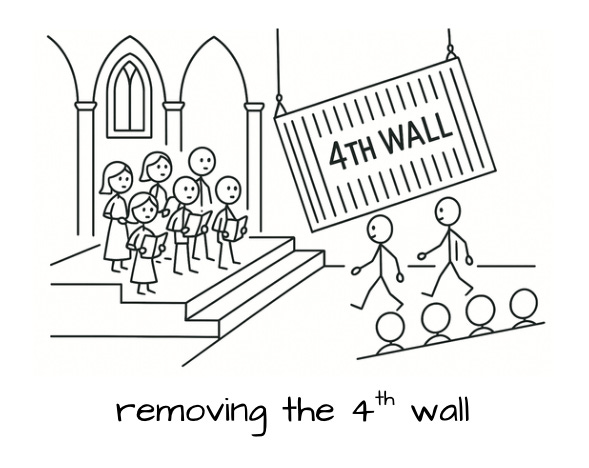I (Chris LeMaster) am trying something different this week by removing the fourth wall to start a conversation with YOU.
🎧 Prefer to hear this post instead? Hit play.
These posts are my attempt to take all of the wisdom, insights, ideas, disagreements, and revelations from our monthly Patient Safety Community meetings, synthesize them, and then reflect them back to you, with a little of my take. In other words, it’s been a selfish attempt to make sense of thoughts floating in my head for years.
At least a few people are reading these posts, so perhaps I should explain who I am and what the Patient Safety Community is.
First, me. Honestly, who I am doesn’t matter all that much.* These posts and this community are about us, not any one individual.
*If you must know, I’m an ER doc at Kaiser in Oakland and Richmond, California. I work for the Permanente Medical Group. If titles matter to you, I am the Physician Safety Lead for Kaiser in Northern California. I should also say that everything I write represents my views, not the organization I work for.
Second, the Community. This group began as a series of conversations between myself, Nancy Leveson, Elizabeth White Baker, Ross Koppel, Jo Wailing, and a handful of other patient safety experts shortly after the conviction of RaDonda Vaught for the death of Charlene Murphy at Vanderbilt University. Weeks earlier, I was listening to a wonderful episode of Todd Conklin’s PreAccident Investigation podcast in which Alan Frankfurt, an anesthesiologist from Texas, asked Todd what those on the cutting edge of safety were going to do to address this event.
That episode changed me.
It forced me to ask, “what am I gonna do?” I emailed Todd and Alan, leading to those early conversations, which never stopped. In fact, the conversations ARE the Patient Safety Community, something we’ll cover in an upcoming post.
This community is a field experiment. We don’t pretend to hold the truth and we’re not attached to any one approach or interpretation. That said, our conversation has covered a lot of ground — what is safety?, systems and systems thinking, accountability, Safety I/II/III, just culture, restorative responses to harm, the wisdom of the frontline, informatics (e.g., AI, EHRs), systems safety engineering (STAMP), human factors engineering (SEIPS), resilience engineering, human and organizational performance (HOP), human “error” and its siblings (e.g., diagnostic “error”), hindsight bias, federal and state policy and legislation, patient safety organizations, the history/success/disappointment of the patient safety movement, the need to more fully include law/policy/economics into safety work, and MANY other topics.
This community is about the exchange of ideas, not money. We’re not selling anything.
We are now 100+ strong and growing. We are patients, patient advocates, nurses, physicians, systems safety/human factors/resilience/industrial engineers, hospital leaders and managers, academics, researchers, policy experts, executives, informaticists, and more — the Patient Safety Choir — those people for whom improving patient safety is enough. They don’t need an ROI.
Now this is where YOU come in. When we remove the fourth wall, the audience becomes the choir.
If you care about patient safety and your intentions are good, then you belong here.
What conversation do you want to have?
And what is it that you want to do?
Feel free to leave your thoughts in the comments section.
This post is part of a series. Click here to start from the beginning.






I love this experiment and I am all in.
What am I currently ‘removing’ to let something better emerge?
We’re working on stripping away the assumptions that safety and performance must live in separate silos. When we remove those walls, people find their rhythm—and systems get smarter.
Where am I seeing safety sleep better?
When frontline teams begin to design the work themselves, when RCA conversations shift from blame to design, and when organizations stop reacting and start listening.
Nice to find you here! I've been looking for healthcare writers on Substack. I'm also focused on patient safety - I combine lived patient experience with systems design expertise and healthcare research. Your ER perspective is invaluable - I approach it from the patient experience design side. Really appreciate your work in this space. My Substack is Ask the Patient.